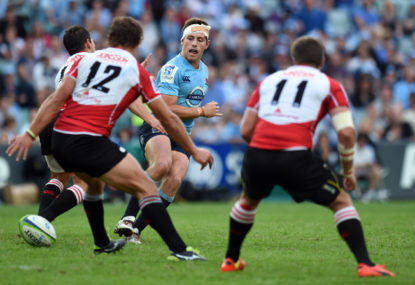The format of the Super Rugby competition is broken. Every rugby fan knows it. But what are those in charge doing about it?
Sadly, their response is a bizarre new Super 18 format.
But have no fear, I have a format which will fix most of the major problems the tournament faces. Now if we can just get the SANZAR bosses to take notice.
Problems with the current format
The tournament is unequally structured, resulting in not all teams playing each other, while others play each other twice, yet points are all accumulated in the same league. In short, the tournament lacks credibility.
The tournament is an unnecessarily long 21 weeks, with 16 regular season games for each team.
The large conference size means that halfway through the tournament the competition is effectively over for many sides out of contention for a finals spot.
Expansion of the tournament can be taken as a given, both to spread the game to new markets, and also because of political pressure from South Africa’s sixth team. This will increase the number of mismatches as these new sides struggle against established sides and lower the tournament quality.
Goals for change
An increase in number of teams, but not the amount of games is needed.
South Africa has a sixth team, there is not much to be done about that. But the expansion of the tournament to Pacific Islands, Asia and Argentina will help develop rugby in these markets. Argentina for instance is in desperate need of local sides competing in a high level tournament.
But a fairer, more credible tournament structure where each team plays each team once is a must. So, how do you increase the amount of teams, spreading the game to new markets, while at the same time maintain quality and relevance of games?
I suggest a 20 team tournament, initially divided into five pools of four teams each, which then progresses to two tiers of 10 teams each.
There will be two Atlantic pools, consisting of the six South African sides plus two Argentinian sides, and three Pacific pools, consisting of the ten established New Zealand and Australian sides plus two Asian/Pacific Island sides.
Home-and-away-games are played against each team in your pool, resulting in six games played per team. The top two teams progress to Tier-1 and the bottom two teams to Tier-2. Within these tiers a full round robin is played, similar to the Super 10.
Because matches will have already been played against the other side from a team’s pool it won’t be necessary to replay this side, resulting in a further eight matches per team. This takes the regular season games to fourteen, two less than the current Super Rugby and one less than the proposed Super 18.
This system solves the problem of the unequal league structure that currently exists, while also increasing the relevance of the matches for longer into the tournament. Each tier of ten teams will be more competitive, as teams will be more closely matched, allowing for the smoother development of new sides, as well transforming previously redundant fixtures into important clashes.
Imagine the Rebels versus the Lions for instance, with both sides now having genuine ambitions to play in the finals. No one enjoys watching their side lose week after week, so this new structure could help to bring crowds to the stadiums.
Additional benefits include a shorter tour to Australasia for the South African sides of only three weeks. There will now be four semi-final matches – two for each tier, and two finals. This is an increase in finals from five matches to six, but at the same time reducing the time for finals to two weeks. More unions will therefore have the chance to host a final.
Also, the tournament can easily be expanded to a 24 team format in the future.
See here for an excel sheet describing the typical season. I have assumed this week’s order of teams for the seeding in this example. I will summarise below also.
The tournament length will be eighteen weeks, including two bye weeks for each team and two weeks of finals. This is a reduction in three weeks from the current Super Rugby. The amount of games in a season will increase from 125 to 146, while individual teams will play only 14 regular season games.
I will describe the season of two sides that have experienced different fortunes in Super Rugby, the Crusaders and Rebels, in order to explain the season more clearly.
The Crusaders are pooled with the Brumbies, Chiefs and Pacific A. After playing home-and-away games against the other three sides (6 games) the Crusaders advance (together with the Brumbies) to Tier-1. Here they play each other side, except the Brumbies, once each. These fixtures include away games to the Bulls, Stormers, Waratahs and Hurricanes, and home games against Atlantic team A, Sharks, Force and Highlanders. If in the top four of this tier they will then play in the semi-finals, and possibly finals.
Meanwhile, the Rebels, who play home-and-away fixtures against the Blues, Force and Waratahs in their pool, advance to Tier-2. Here they play home fixtures against the Lions, Kings, Pacific A and Reds, and away games against the Cheetahs, Atlantic B, Chiefs and Pacific B.
Both sides will therefore have something to play for potentially until the very end of the tournament.
This proposed new format is more credible than current versions, shorter, more interesting, more inclusive of developing teams, and will result in a higher quality of rugby being played and enjoyed by fans.
What are your thoughts Roarers?






























































































